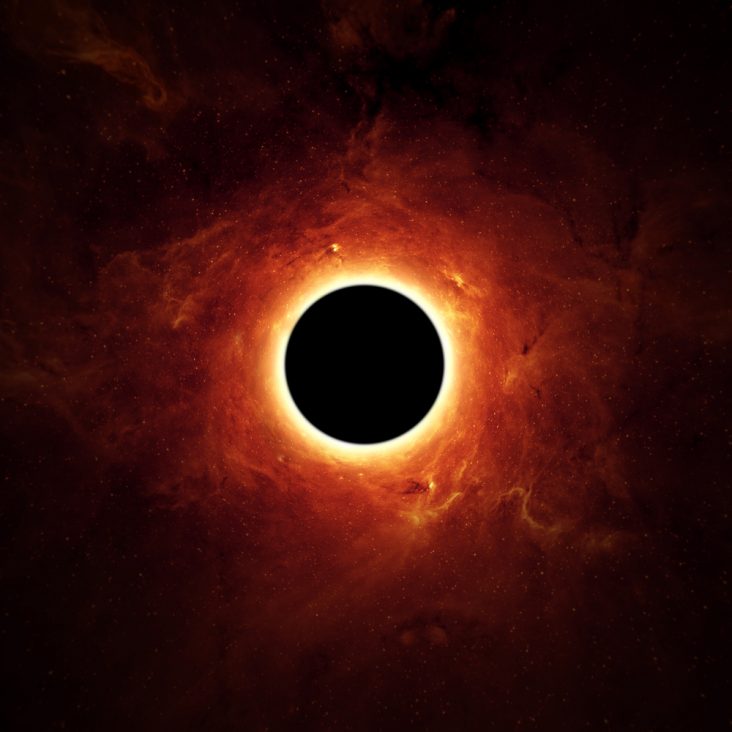Scientists examine the first close up image of a black hole.
The Event Horizon Telescope, a project to create a large telescope array consisting of a global network of radio telescopes. It has set its sights on a pair of behemoths: a massive black hole 53.5 million light-years away in galaxy M87 and Sagittarius A*, the supermassive black hole at the Milky Way’s center.
The observatories teamed up in April 2017, to observe the black holes’ event horizons, the boundary beyond which gravity is so extreme that nothing can escape. After almost two years of interpreting the data, scientists are getting ready for a public announcement any day now.
Here’s what it might look like:

What does a black hole look like?
Black holes live up to their names. The pull of their gravity is massive that past a certain point nothing can escape, even light. This includes the electromagnetic radiation – such as X-rays, radio and light waves, infrared, – that would allow us to detect the object directly. Even though they don’t look like much, astronomers know the objects are there because of a black hole’s entourage. Matter settles into an orbiting disk as a black hole’s gravity pulls in dust and gas. Additionally, atoms are pushing one at another at extreme speeds. Matter white-hot is heated with all this activity emitting X-rays and other high-energy radiation.

All the stars in their galaxies are outshined with the disks of the most ravenously feeding black holes.
Scientists expect to capture the black hole’s shadow on its accompanying disk of bright material. The laws of gravitational physics and Computer simulations give astronomers a pretty good idea of what to expect.
They are expecting the material behind the black hole to be visible due to the disk’s light. The image will look asymmetrical most probably as gravity will bend light from the inner part of the disk toward Earth more strongly than the outer part making one side look brighter in an askew ring.




